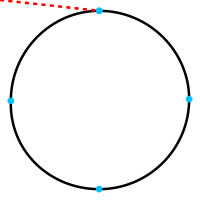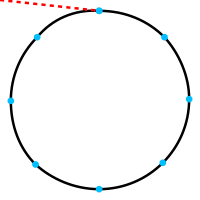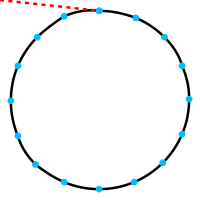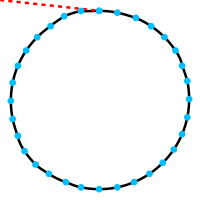This is the official code for the paper "DeepSVG: A Hierarchical Generative Network for Vector Graphics Animation". Please refer to section below for Citation details.
This repository includes:
- The training code to reproduce our Hierarchical Generative Network: DeepSVG.
- A library for deep learning with SVG data, including export functionality to differentiable PyTorch tensors.
- The SVG-Icons8 dataset.
- A Graphical user interface showing a demo of DeepSVG for vector graphics animation.
Start by cloning this Git repository:
git clone https://github.com/alexandre01/deepsvg.git
cd deepsvg
Create a new conda environment (Python 3.7):
conda create -n deepsvg python=3.7
conda activate deepsvg
And install the dependencies:
pip install -r requirements.txt
Please refer to cairosvg's documentation for additional requirements of CairoSVG. For example:
- on Ubuntu:
sudo apt-get install libcairo2-dev. - on macOS:
brew install cairo libffi.
- Ubuntu 18.04, CUDA 10.1
- macOS 10.13.6, CUDA 10.1, PyTorch installed from source
![]() Download the dataset using the script provided in
Download the dataset using the script provided in dataset/ by running:
cd dataset/
bash download.sh
If this is not working for you, download the dataset manually from Google Drive, place the files in the dataset folder, and unzip (this may take a few minutes).
icons_meta.csv(9 MB): https://drive.google.com/file/d/10Zx4TB1-BEdWv1GbwcSUl2-uRFiqgUP1/view?usp=sharingicons_tensor.zip(3 GB): https://drive.google.com/file/d/1gTuO3k98u_Y1rvpSbJFbqgCf6AJi2qIA/view?usp=sharing
By default, the dataset will be saved with the following tree structure:
deepsvg
└─dataset/
├── icons_meta.csv
└── icons_tensor/
NOTE: The
icons_tensor/folder contains the 100k icons in pre-augmented PyTorch tensor format, which enables to easily reproduce our work. For full flexbility and more research freedom, we however recommend downloading the original SVG icons from icons8, for which you will need a paid plan. Instructions to download the dataset from source are coming soon.
DeepSVG has been developed along with a library for deep learning with SVG data. The main features are:
- Parsing of SVG files.
- Conversion of basic shapes and commands to the subset
m/l/c/z. - Path simplification, using Ramer-Douglas-Peucker and Philip J. Schneider algorithms.
- Data augmentation: translation, scaling, rotation of SVGs.
- Conversion to PyTorch tensor format.
- Draw utilities, including visualization of control points and exporting to GIF animations.
The notebook notebooks/svglib.ipynb provides a walk-trough of the deepsvg.svglib library. Here's a little sample code showing the flexibility of our library:
from deepsvg.svglib.svg import SVG
from deepsvg.svglib.geom import Point, Angle
icon = SVG.load_svg("docs/imgs/dolphin.svg").normalize()
icon.simplify_heuristic() # path simplifcation
icon.zoom(0.75).translate(Point(0, 5)).rotate(Angle(15)) # scale, translate, rotate
icon.draw()And making a GIF of the SVG is as easy as:
icon.animate()Similarly to PyTorch3D, differentiable operations can be performed on a SVGTensor, enabling to deform a circle to match an arbitrary target via gradient descent.
Interestingly, using a lower number of Bézier commands in the initial circle (n) creates somehow artistic approximations of the target shape.
See notebooks/svgtensor.ipynb.
| n | 4 | 4 | 16 | 32 |
|---|---|---|---|---|
| optimization |  |
 |
 |
 |
While developing DeepSVG, we have also built a Graphical User Interface (GUI) for easier visualization of our model and as a tool to easily create 2D animations.
The code, available under deepsvg/gui, is written with Kivy and the UI style is inspired from the design tool Figma.
DISCLAIMER: this GUI has been developed for demo purposes mainly and features one would expect from a vector graphics editor (like rescaling) will be added in the near future. For more flexibility, we recommend creating animations programmatically using the template code provided in
notebooks/animation.ipynb.
Shortcuts:
H: hand toolP: pen toolCtrl/⌘ Cmd P: pencil toolK: make keyframespacebar: play/pauseCtrl/⌘ Cmd E: export animation to GIF (file is saved by default in./gui_data)
Start a training by running the following command.
python -m deepsvg.train --config-module configs.deepsvg.hierarchical_ordered
The (optional) --log-dir argument lets you choose the directory where model checkpoints and tensorboard logs will be saved.
Download pretrained models by running:
cd pretrained/
bash download.sh
If this doesn't work, you can download them manually from Google Drive and place them in the pretrained folder.
hierarchical_ordered.pth.tar(42 MB): https://drive.google.com/file/d/1tsVx_cnFunSf5vvPWPVTjZ84IQC2pIDm/view?usp=sharing
We provide sample code in notebooks/interpolate.ipynb to perform interpolation between pairs of SVG icons
and notebooks/latent_ops.ipynb for word2vec-like operations in the SVG latent space, as shown in the experiments of our paper.
| Description | Link to notebook |
|---|---|
| SVGLib walk-through | svglib.ipynb |
| Differentiable SVGTensor optimization | svgtensor.ipynb |
| DeepSVG interpolation between pairs of icons | interpolation.ipynb |
| DeepSVG latent space operations | latent_ops.ipynb |
| DeepSVG animation between user-drawn images | animation.ipynb |
If you find this code useful in your research, please cite:
@misc{carlier2020deepsvg,
title={DeepSVG: A Hierarchical Generative Network for Vector Graphics Animation},
author={Alexandre Carlier and Martin Danelljan and Alexandre Alahi and Radu Timofte},
year={2020},
eprint={2007.11301},
archivePrefix={arXiv},
primaryClass={cs.CV}
}
Contributions are welcome! Feel free to submit a pull request if you have found a bug or developed a feature that may be useful for others. Also, don't hesitate to contact me for any further question related to this code repository.
This code is released under the MIT licence.






